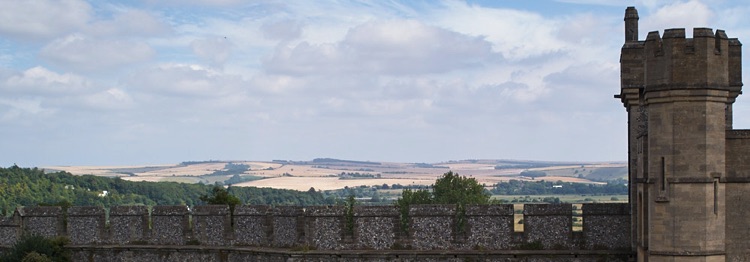1337
Year
The Hundred Years War
Event
1337 - 1429 Summary
This page is not intended to provide a complete history of the war, but just to some of the major events in the war and those events which touched Sussex. The Hundred Years war was a series of wars and battles with intervals of peace, spread over 100 years. While the war is often thought of as a war between England and France, the war is better considered as a dynastic conflict between the houses of Plantagenet and Valois. There were three major phases to the war:
1337–1360 Edwardian War (Edward III)
1369–1389 Caroline War (Edward III, Richard II)
1415–1429 Lancastrian War (Henry V, Henry VI)
Origin of the War
In 1152 with is marriage to Eleanor of Aquitaine, Henry II of England ruled over substantial areas of France, including Normandy, Aquitaine, Maine, Anjou, Touraine, Poitou, and Gascony. Much of this land was won back for France by Capetian King Philip II from King John of England. With the death of Charles IV of France, the Capetian first born male lined ended. Edward III, the king of England claimed he was the heir to France through his mother Isabella, who was the sole surviving heir of Philip IV. Edward was opposed by Philip VI of Valois who was descended from Philip IV brother.
1346 Battle of Crecy and Siege of Calais
An English victory for the Edward III against a much larger French force. The English long-bowmen proved the decisive factor. Richard Fitzalan, the 10th Earl of Arundel led one of the divisions. King Edward then besieged Calais, a port on the French coast. Calais fell after a lengthly siege giving Edward a secure location from which he could provision his campaigns in France.
1356 Battle of Poitiers
A Decisive English victory. The English forces under the command of the Black Prince defeated a larger French force. Sir John Pelham of Laughton, Sussex was involved in the capture of the French king. The Pelham family were benefactors to a number of Sussex churches and in some of these can be found etched the Pelham buckle, representing the sword buckle taken by Sir John from the French king at the battle.
1377 The French Raid the South of England
After King Edward III death in 1377, the French started raiding the south coast of England and caused considerable damage in Sussex. The men of Sussex launched reprisal raids the next year.
1379 Sir John Arundel Dies at Sea
While bringing help to the Duke of Brittany, Sir John Arundel and many ships and men are lost at sea in a severe storm off the coast of Devon. The chronicler Thomas Walsingham considered this divine retribution for Sir John allowing his men to rape the nuns at a nearby convent.
1386 French Invasion of England
The French made extensive preparations for the invasion of England. Bad weather scattered the invasion fleet and many French ships are driven to the English coast where there were captured.
1395 Truce
Richard II of England and Charles VI of France agreed to a truce. The truce was codified in the 1396 Treaty of Paris and lasts for 28 years. Historian Jean Froissart was able to return to England.
1415 Battle of Agincourt
A victory for Henry V of England over a much larger French force. The English archers were a decisive factor.
1429 Siege of Orleans
Joan of Arc rallied the French forces and forced the English to withdraw. In a series of subsequent battles the French drove the English from France.

Sussex Timeline


